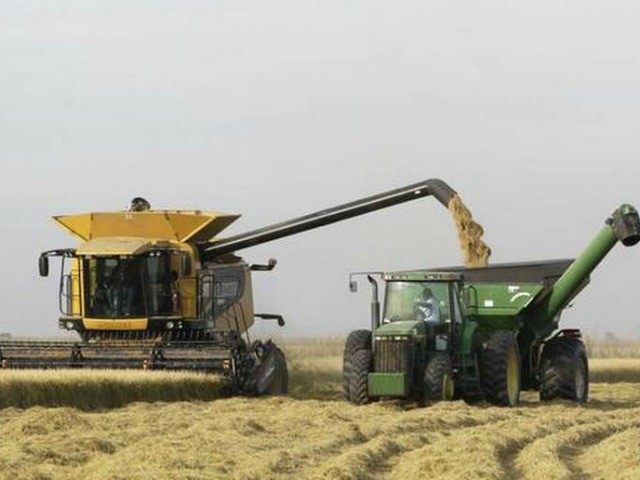Farmland prices that had been enjoying a 28-year bull market finally turned down in 2014. Despite real estate, stocks, bonds and commodities crashes over the period, farmland had never had a down year since 1986. However, the Wall Street Journal has reported that farmland suffered a loss of 3 percent last year, “reflecting a cooling in the market driven by two years of bumper crops and sharply lower grain prices, according to Federal Reserve.”
From 1982 to 1986, the value of farmland across America lost 48 percent of its value. With the combination of Paul Volker and the Federal Reserve cranking up interest rates, and bountiful harvests crushing food prices, the value of farmland Across America was hammered.
During the era of rising globalization from 1987 to 2013, the demand volumes for U.S. farm products soared and prices consistently marched upward. As emerging market countries achieved economic growth, newly affluent populations demanded more meat, nuts and fresh fruit in their diets. As the world’s leader in exporting cattle and poultry, American grain farmers also enjoyed rapidly rising domestic demand.
With reported high appreciation and expanding cash rents, farmland from California, the Midwest and the South became what was touted as a “Low Risk and Higher Return Investment.” According to a study by Robert Schiller of Yale University, farmland values rose by 748 percent from 1982 to 2012.
Yet farmers seem to have run into what investors call a “Black Swan” of “flawless weather” over the growing season. The result was the largest US crop in history. The abundance has caused the corn price to plummet by more than 50 percent to $3.78 a bushel–from an all-time-record high of $7.63 during the severe 2012 drought.
The U.S. Department of Agriculture projects that net American farm income, after peaking at a record $129 billion in 2013, will fall this year by 32 percent from $108 billion in 2014 to $73.6 billion, the lowest income since the 2009 financial crisis.
The Federal Reserve Bank of Chicago, covering Illinois, Iowa and other big farm states, produces national surveys to track the agricultural sector. Lenders told the Fed that the average value of farmland fell by 3 percent in 2014, the Journal reports. About half of the bankers in the Fed’s most recent survey said that they expect farmland values to decline this quarter, “reflecting reduced demand for land amid tighter profit margins for farmers.”
The world-wide bout of commodity deflation is being felt across entire commodity supply chains. According to the Journal, the Fed report, “spotlight[ed] an overall slowdown in the U.S. farm economy and in the appreciation of farmland prices. Crop prices had soared for much of the past decade, fueled by drought and rising demand for corn from ethanol processors and foreign importers. The gains pushed agricultural land values so high that some analysts warned of a bubble.”
“Lower corn and soybean prices have been primary factors contributing to the drop in farmland values,” David Oppedahl, senior economist at the Chicago Fed, told the Journal–adding that for 2015, “district farmland values seem to be headed lower.”
The recession is being exacerbated by farmers clamping down on spending. The St. Louis Fed said that rural bank CEOs expect an average of 14.4% decline in equipment sales in 2015. “It is very difficult for farmers to buy farmland and new equipment with corn prices in the $3.50 range,” said one Missouri lender in the St. Louis Fed report.
Farmers have uniquely benefited from a three-decade run of higher crop and farmland prices. But with the Chicago Fed’s index of loan-repayments falling to the lowest level since 2002, and the index of loan-demand reaching the highest level since 1994, the modest decline in farms values signal a risk of another major price crash.

COMMENTS
Please let us know if you're having issues with commenting.